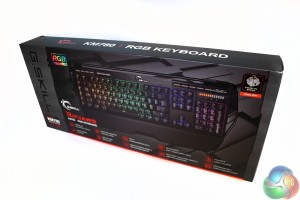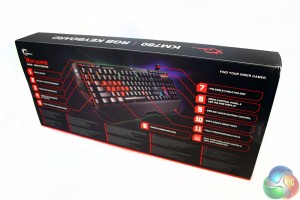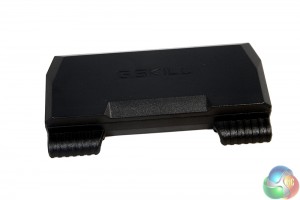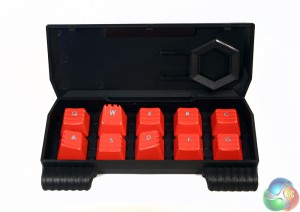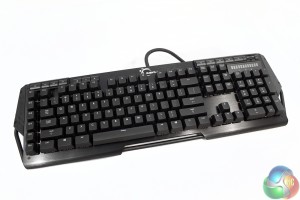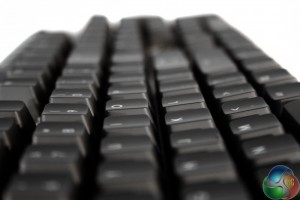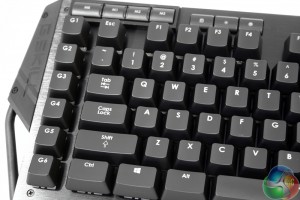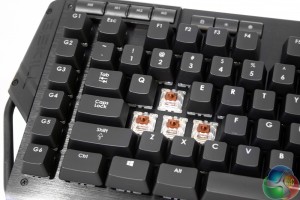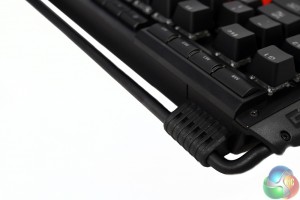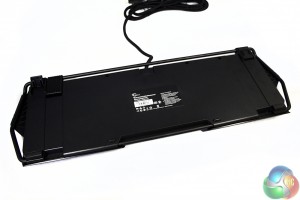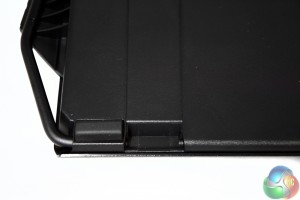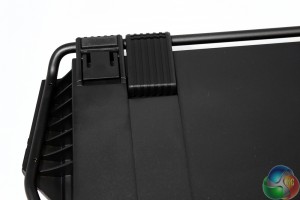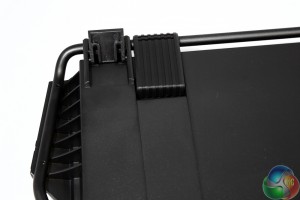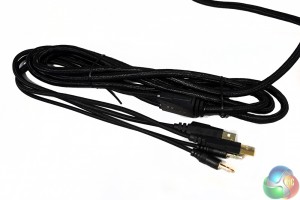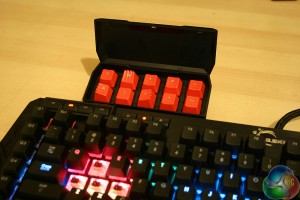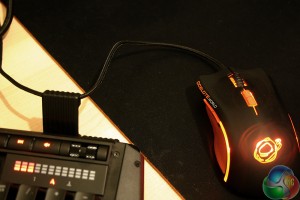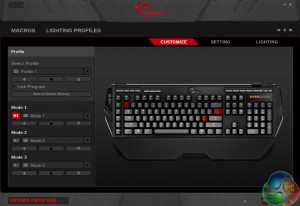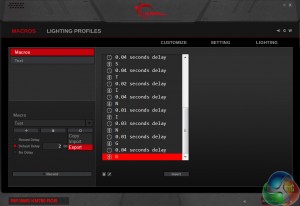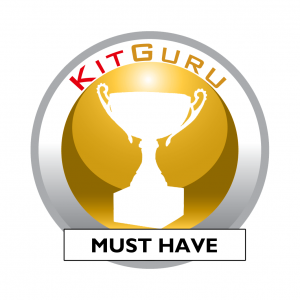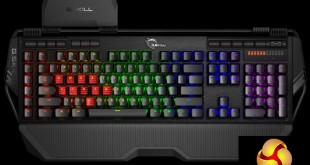
G Skill may be better known for their memory and storage products, but they are expanding their portfolio. Today we look at their new keyboard – the Ripjaws KM780 RGB. This keyboard incorporates Cherry MX mechanical switches and clear housings to deliver uniform RGB backlighting.
It also packs a metal piped frame, detachable wrist rest, media keys, macro switches and a number of other fancy functions, all into a brushed aluminium frame. This is no budget product, as RGB mechanical keyboards tend to be – but can it justify the price tag?
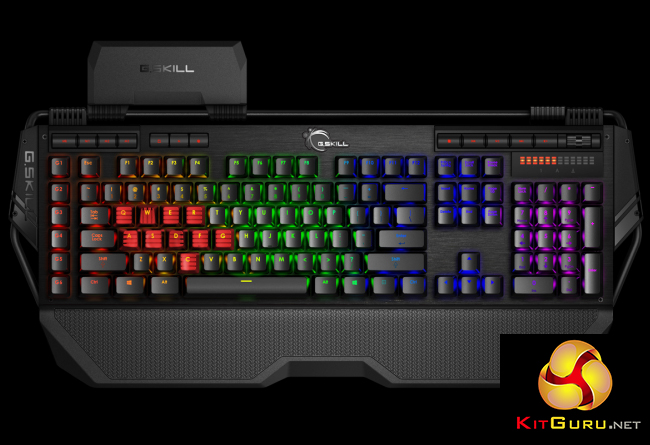
The G Skill Ripjaws KM780 RGB has all of the usual back-end software features and a number of neat additional extras not included by other keyboard companies. Time to take a look up close.
Specifications:
- Keyboard Type: Mechanical.
- Key Switch: Cherry MX RGB Brown Switch.
- Backlighting: Yes.
- Anti-Ghosting: Yes.
- Full N-Key Rollover: Yes.
- Gaming Mode Option: Yes.
- On-board profile: 3.
- Additional Macro Keys: 6.
- Dedicated Media Control Panel: Yes.
- Audio-in and Microphone-out: Yes.
- USB Passthrough: Yes.
- Mouse Cable Holder: Yes.
- Detachable palm rest: Yes.
- Dimensions: 518 x 172 x 48 mm.
- Dimensions: w/ palm rest 518 x 228 x 48 mm.
- Weight: 1.36 kg.
- Weight: w/ palm rest 1.54 kg.
- Warranty: 2-Year Limited Warranty.
The packaging for the G Skill KM787 Ripjaws is of a high standard, with a giant picture of the board itself in its default configuration and a taste of the backlighting effects you can put into play. There is also a sticker to let you know which type of mechanical switch you have under the hood. In the case of this review sample, it is Cherry MX Browns with a clear plastic surround.
While there is also a sticker letting us know that this is an “English,” layout, it does actually adopt the American style.
The back highlights features in further detail, as well as showing off what it looks like with some custom keycaps in place.
Speaking of which, they come in a neat carry case that can clip on to the keyboard itself. They even have their own cap-key locked to the lid. The replacement caps are painted in an eye-catching red, while the WASD caps are slanted towards the centre, making them more easily pressed during FPS gaming.
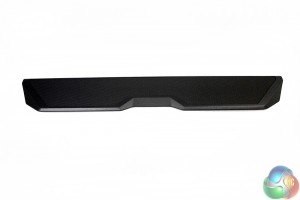
Along with the manual and warranty sheet, the Ripjaws keyboard also comes with a detachable wrist rest. It locks into place underneath the board and has a patterned, plastic coating on top for comfort. We have seen in the past that similar surfaces can often become dusty and can collect skin and other dirt after prolonged use, more so than flat plastic rests can.
We shall have to see how this one performs over time.
The board itself is black with a brushed aluminium chassis and plastic edging. There is also an external metal frame-work of pipes that runs around the circumference. This is used to clip on extras such as the key-cap case, as well as provide stability and carry grip-points.
The key caps are quite typical of this type of board, with the usual slightly concave structure and clear-plastic lettering which lets the backlighting do most of the work of telling you which letters and numbers are which.
Underneath the caps are the Cherry MX Brown switches, though this type is the same as the ones we saw in the Corsair Gaming Vengeance K70. In-fact much of that design can be seen in this board, from the media keys to the brushed aluminium body. Perhaps they are made via the same OEM partner…
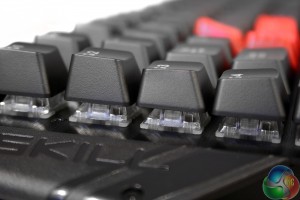
The clear plastic body of these Cherry switches are designed to mitigate one of the main problems with this switch type. Unlike some of the new mechanical switches produced by Steelseries and Logitech, which have the LED mounted in the centre, Cherry's MX switches mount the LED at the ‘top' of the switch. While that does provide backlighting, it means that the intensity of it is off-centre, so keys with multiple functions cannot always light up every part of them evenly.
This is more of an aesthetic problem, but it can be fixed by relocating the LED, or in cases like this, using a clear-plastic housing for the switch, which is what G. Skill has opted to do.
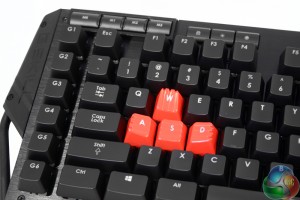
That said you do not have to use the default key caps with this board, there are also those few extra ones that came in the neat carry case. They are more slanted than regular keys, which makes me wonder how well you would be able to type with such caps installed. We shall have to investigate further.
It is also noteworthy at this end of the Ripjaws keyboard, that there are six macro keys added to the edge, allowing for quick access to additional functions.
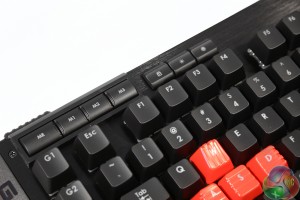
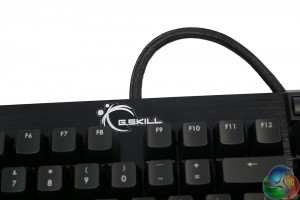
At the top of this board there are four more switches, used for changing keyboard profiles. The first however allows for the quick recording of new macros for future use. They are a different kind of key to the rest of the board, and have a much spongier texture. You would not want to type on them, but of course you are unlikely to use these buttons more than once in a while.
In the centre of the top of the board is the G Skill logo. It is more like a sticker than an embedded logo which is a shame, but it does not stand out too much to be an annoyance.
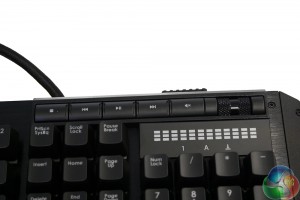
At the other end of the board we have the volume control and media keys – again, looking much like the set up on the K70 keyboard. These are the same button types as the profile switches and they occasionally get stuck when you press them down. Nothing a good wiggle cannot fix, but it is a mild annoyance.
The volume control however is simple and easy to use, operating much like a mouse scroll wheel. Underneath it is an LED indicator of volume, letting the user easily see how much more headroom they have, without resorting to on-screen icons.
Around the back of the KM780 is more of that metallic piping, which provides adequate room to attach the replacement key-cap casing.
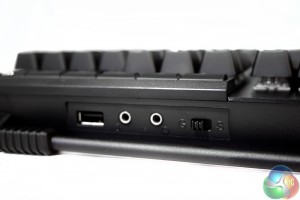
It is also where you will find the USB pass-through port, for those wishing to plug-in headphones, a mouse or any other USB device for simple connectivity. There are also headphone and microphone ports and a small switch, which is used to switch between standard six-key rollover and N-Key rollover, which allows for any number of keys to be pressed – and more importantly, registered – at once. It is a little confusing, the “G” is for N-Key rollover and the “S” for “standard.”
The underside of this keyboard is as black as the top, and has a number of rubber feet to keep the board in place at all times.
However if you prefer the keyboard slanted at a sharper angle, you can flip-up these extender feet. Unfortunately they do not have any rubber feet of their own.
The cable for the KM780 is braided to a high standard and the connectors have a gold-plated finish. As well as making them look more fancy, this can also improve durability of standard nickel-plated headers.
Testing a mechanical gaming keyboard involves plenty of gaming, as you might expect. We put it through its paces in a variety of games from different genres, as well as typing on it for several hours every day for just over a week, testing its responsiveness, speed, accuracy and comfort over long periods of use. We also investigate its back-end software functionality and any additional abilities it may have.
Since this is a gaming board though that is where we spent the majority of our time testing this keyboard. The results however are likely to be unsurprising to anyone who has ever used a Cherry MX equipped keyboard – we can tell you that it is very good indeed. The brown switches used are light and react well and in some cases, the tactile feedback allows you to leave off extra pressure that might otherwise be applied, as you know when the key has been activated.
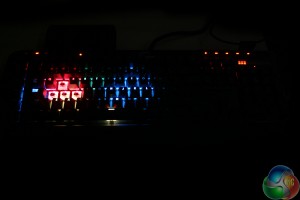
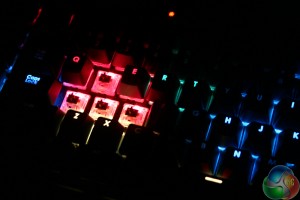
It is fast enough to hang with the Cherry Red switch users in fast paced FPS and RTS titles, such as Unreal Tournament and Age of Empires II, as well as activating abilities more than quick enough in MOBA titles like Heroes of the Storm. As well as providing a lightning fast response in those sorts of titles though, we also found it viable in less speed based games, like The Talos Principle and Tabletop Simulator.
The only part of the of the GSkill KM780 that I was not a huge fan of gaming wise was its optional key caps. I found the WASD ones way too slanted to be comfortable during use.
As much as I liked the switches during gaming though (apart from the custom caps) in actuality, the real stand out plus point of a Brown switch board is how it feels when you type. Unlike Red and Black MX switches, Browns (like blues) have tactile feedback when the switch is engaged, meaning you do not have to bottom out a key to actuate it. That reduces the impact of typing on your fingers and makes it possible to have an even lighter touch than traditionally light red switches.
It also can increase typing speed, since you can remove your finger that bit quicker. For reference, my average typing speed across mechanical boards is 110 words per minute. On a couple of quick tests on TypeRacer.com, I was able to achieve a speed of 120 and 116 word per minute using the G Skill KM780.
Beyond the raw abilities of this keyboard, it has a lot else going for it too. I enjoyed the placement of the media keys a lot, since they were all clustered together and could be adjusted with just one hand. There was no need to stretch my small hands across large areas of the keyboard to press a function key and a volume control: I simply swept the wheel up or down as I saw fit.
While the media buttons are not quite as high quality as the brown-switch keys on the rest of the board and would stick occasionally if pressed hard from a slight angle, they worked well enough for the most part. The volume indicator was also useful to tell how much headroom I had for raising the volume while in-game, without having to tab out to look at the Windows icon.
I liked the subtle touches of using the exterior piping to hold on to the custom key-cap casing – even if I was not a massive fan of the key-caps themselves – and the cable tidy for the mouse was particularly useful.
The software for the G.Skill KM780 is pretty fully featured. Keys can be easily remapped or given different functions and macros can be recorded and tweaked, with set delays between presses, or none at all. There are three modes that can be switched to on the fly and the profiles can even be stored locally on the keyboard itself, so if you switch systems on occasion you will still have all of your custom key presets.
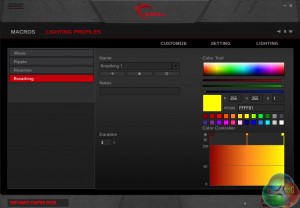
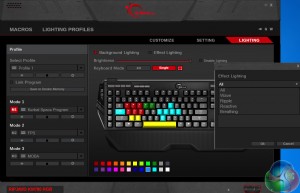
Lighting options are deep and varied, with options for effects – including the always beautiful reactive – and single and multi-key light shows. The colour controller lets you fade from one colour to another, making this keyboard at least as versatile as the much beloved Corsair Gaming K70 which we reviewed this time last year.
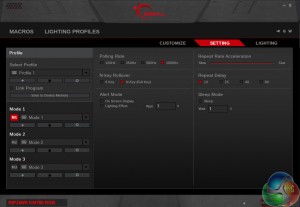
The settings offer a myriad of options, letting you customise the keyboard. It defaults to all of the more advanced options, such as high polling rate and full N-Key rollover, but you can reduce those if you prefer – or your system is not compatible.
I have to say, I did not like how the product automatically updated the firmware the first time I opened up the back-end; without any kind of prompt. If you are not prepared this has the potential to brick the keyboard and make it unusable. Hopefully G.Skill can introduce new code to at least prompt a ‘yes/no' response in future.
For a company that has a lot less experience than others in making peripherals, GSkill's first foray into the market is a solid one. Although the KM780 is based on a very similar design to the Corsair K70, GSkill could not have picked a better starting point. The build quality of this board is excellent, the switch choice is near-perfect and the back-end software is fully featured and intuitive.
Gaming wise, this is a keyboard with Cherry MX Brown switches, so if you like that switch type, you know what you are in for. There are red options too for those who want them. Right now there are no black, blue or more exotic green options, which is a shame.
For everyone else though, you can enjoy a brushed aluminium finish, a comfortable, detachable wrist rest and fully featured media controls, with the lovely little addition of a LED volume slider letting you know exactly how much juice you are putting into your speakers or headset. The media buttons are not of the highest quality, getting stuck on occasion, but they do the job well enough and are hardly commonly pressed.

I found the GSkill software very easy to pick up and use, with deep options that let me craft a number of different lighting schemes, each of which is triggered by switching mode. It would have been nice to have had the ability to load a new profile when a certain application is launched though. I also hope G.Skill changes the automated firmware update, as it does make me worry that a new buyer – depending on what they are doing at the time, may end up with a bricked keyboard.
The only part of this keyboard I did not like at all, were the additional keycaps. While I like the idea of including optional extras the slope on the keys, particularly the W and D keycaps were not comfortable to use. I found myself often pressing the very top of the key and being unsure where to rest my finger tips. Typing on them could also be problematic, with the off-centre press on the D key in particular sometimes missing being activated.
That minor issue aside though, the GSkill KM780 is a fantastic keyboard. Its switches are among my favourites ever, it has excellent back lighting, great back-end software, media keys, macro switches, braided cabling and a very useful mouse-cable holder all in one package. It would be a keyboard I would happily use myself daily.
No UK pricing or release information has yet been unveiled, but based on the U.S. price of $170 (reduced currently to $150 in some places) converted and with the usual VAT and import taxes, we can probably expect the sterling price to be around the £140-£150 mark.
Discuss on our Facebook page, over HERE.
Pros
- Industry standard Cherry MX brown switches with clear housing.
- RGB backlighting is near-perfect thanks to switch housing.
- Aluminium finish looks good, along with uniform black theme.
- Media keys and volume control are well placed.
- Braided cabling, mouse cable holder and extra keycaps are all nice additions.
- Fully featured and intuitive back-end software.
Cons
- Software automatically updates the firmware without prompt.
- Replacement keycaps are not very comfortable.
- Brushed aluminium does leave fingerprint marks.
KitGuru Says: Although the price tag puts it at the top end of keyboard pricing, the G.Skill Ripjaws KM780 ticks almost all of the boxes with a permanent marker. It games well, types well and has enough additional features that you can customise it to your heart's content.
 KitGuru KitGuru.net – Tech News | Hardware News | Hardware Reviews | IOS | Mobile | Gaming | Graphics Cards
KitGuru KitGuru.net – Tech News | Hardware News | Hardware Reviews | IOS | Mobile | Gaming | Graphics Cards


